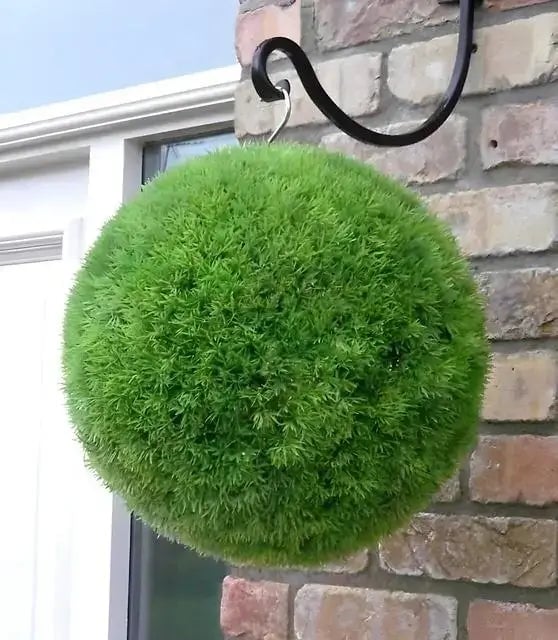



Topiary Moss
This plant ships:
NowWe sell bare root plants - click here to see what you'll receive
Topiary Moss
Topiary Moss is typically grown on frames or structures to give them an artistic and textured appearance. It is renowned for its unique and charming appearance, which offers many benefits when incorporated into landscaping designs. Its distinctive growth patterns and lush green color make it a favorite choice among landscape architects and designers. This verdant element adds a touch of whimsy and elegance to outdoor spaces, transforming them into captivating environments.
Topiary mosses, which include a range of Taxiphyllum and Sphagnum species, are adaptable plants that lend themselves to artistic expression. The ancient Greeks and Romans created topiaries to enhance their formal buildings and add charm to their landscapes. Today, gardeners often grow it on wireframes to create whimsical sculptural forms.
Habitat Of Topiary Moss
It is used in topiaries that grow all over the world. Taxiphyllum species are native to the American continents, Africa, and Southeast Asia. They grow naturally on streambanks, riverbanks, and in bogs. Sphagnums are mostly native to wet areas in the Northern Hemisphere, including peat bogs, moist tundra, woodland swamps, and conifer forests. Both kinds attach themselves to many substrates, including logs and rocks.
This and Sphagnum species come in various colors and forms and tend to have irregular branches and small, delicate leaves. The look of the plants will vary according to their species. They grow in dense mats to create a living, textured carpet of greenery that is soft to the touch. Coloration typically ranges from bright yellowish to medium green, which creates a lush display when used in large-scale projects.
Topiary Moss Is Used For Living Art
Gardeners and landscape architects often use Taxiphillum and Sphagnum to create imaginative forms that resemble animals and geometric shapes. These “living art” sculptures typically employ wireframes as invisible supports under the greenery.
Topiaries add a lively elegance to lawns, gardens, and patios. These elevated yet friendly accents are especially inviting near entrances and garden paths. They bring a cultivated and harmonious aesthetic to your landscape and add novelty and wonder to your outdoor living spaces.
Ecology Of This Stunning Native Plant
offer many ecological benefits. Taxiphillum and Sphagnum species can help oxygenate and purify the surrounding air, store carbon, and provide habitats for microorganisms. They can also help reduce noise pollution to create a more tranquil environment. Creating sculptures from Taxiphillum and Sphagnum is the perfect way to add sophistication to your landscape and give your garden a cheerful, artistic pop that everyone can enjoy. It is used to create decorative, sculpted shapes and designs in gardens.
How do you take care of it?
It grows best in an area with low light exposure, and humidity should be maintained constantly. It has to be supplied frequently with water, or it will turn pale.
How often should you water it?
It should be watered by mist if it is dry or after every few days since it is an indoor plant. Keep your plants fresh since water retention makes it easy for the plant to develop a mold or rot.
How do you identify it?
It is easily identified by its soft, spongy-like touch and its suitability for sticking into shape or literally molding into forms such as frames.
Where does it thrive?
It thrives well under shaded areas, damp areas, and areas with little exposure to sunlight. It can grow both indoors and outdoors.
Should I feed it?
Many people do not need to feed theirs due to the fact that it sucks the nutrients from the humidity within the environment. However, if you need to promote further growth, use a diluted liquid fertilizer.
| Planting zone | [4, 5, 6, 7, 8] |
|---|---|
| Height At Maturity | Under 6 Inches |






Topiary Moss
This plant ships:
Now| Planting zone | [4, 5, 6, 7, 8] |
|---|---|
| Height At Maturity | Under 6 Inches |

